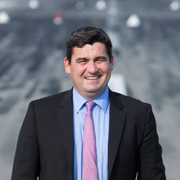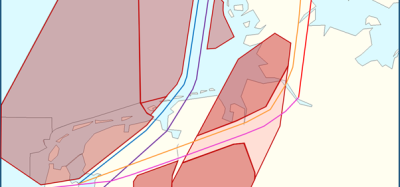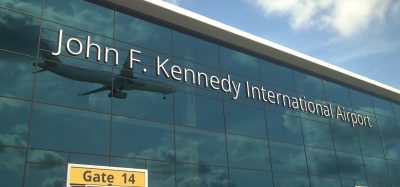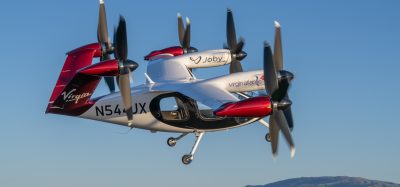Collaborative working: A-CDM at Côte d’Azur Airport
- Like
- Digg
- Del
- Tumblr
- VKontakte
- Buffer
- Love This
- Odnoklassniki
- Meneame
- Blogger
- Amazon
- Yahoo Mail
- Gmail
- AOL
- Newsvine
- HackerNews
- Evernote
- MySpace
- Mail.ru
- Viadeo
- Line
- Comments
- Yummly
- SMS
- Viber
- Telegram
- Subscribe
- Skype
- Facebook Messenger
- Kakao
- LiveJournal
- Yammer
- Edgar
- Fintel
- Mix
- Instapaper
- Copy Link
Posted: 30 June 2016 | Dominique Thillaud, Chairman of the Management Board, Aéroports de la Côte d’Azur | No comments yet
With 12 million passengers in 2015, Nice Côte d’Azur Airport is the second busiest airport in France, after Paris, and one of the 20 largest in Europe. As such, the airport is deemed essential for the performance of the European aviation network. In line with the SESAR project, which aims to modernise European air traffic management, Nice Côte d’Azur Airport decided to implement Airport Collaborative Decision Making (A-CDM). Dominique Thillaud, Chairman of the Management Board at Aéroports de la Côte d’Azur, provides an overview…


A-CDM aims to improve the operations of an airport by enabling smoother traffic flow, facilitating greater predictability of events related to the treatment of flights and crisis situations, optimising the use of airport resources (such as parking positions, taxiways and runways) and helping to achieve more precise coordination in adverse conditions. To date A-CDM is fully deployed at 18 European airports and in the process of implementation at many more airports across Europe.
A-CDM is fully deployed at 18 European airports
Having established a good track record and with implemented airports already seeing the benefits, the decision to deploy A-CDM at Nice Côte d’Azur was an easy one. Once deployed the project will enhance the airport’s participation to the European Network and help to improve the efficiency of its operations to become one of Europe’s major airports. The deployment represents another developmental step and a means of reaching the airport’s traffic growth objectives.
Nice Côte d’Azur Airport signed a memorandum of understanding with the French Directorate of Air Navigation Services (DSNA) in January 2016. Here, common objectives for CDM implementation in Nice were defined and continuous collaborative work is on-going with the air navigation service provider (ANSP) to develop an A-CDM concept adapted to the specifics of Nice Côte d’Azur Airport. The first step in the project timeline – which is hoped to be achieved by the end of 2016 – is to have a connection with Brussels-based Network Manager, EUROCONTROL, and therefore become an Advanced ATC Tower airport. Reaching this important milestone will allow the airport to prove its commitment to the European initiatives, and the goal is to be fully A-CDM deployed by the end of 2018.
A-CDM deployment by the end of 2018
The most important benefit for Nice Côte d’Azur Airport with the A-CDM concept is the enhancement of the operations on the platform, supported by information-sharing improvements. The automation of data exchanges between IT stakeholders’ systems is something new and will help to ensure that information is accurate, to improve safety and to assist with decision-making processes, resources management and crisis situation management. Better use of the airport’s capacity can also be expected with the A-CDM deployment. In addition, becoming an Advanced ATC Tower Airport (connection with EUROCONTROL), is an important step in gaining predictability as new operational processes will be implemented as part of the project.
One of the pillars of airport operations is data sharing among all the stakeholders at the platform – the Airport Operator, French ANSP, Airlines, Ground Handlers and Meteo France. Data sharing provides a good overview of all on-going and planned activities and helps the airport make the correct decision at the correct time. The A-CDM project is based on data sharing transparency between all stakeholders, which is relatively new in the aviation sector. Therefore, it is a good opportunity for European airports to change the way they work.
A-CDM project is based on data sharing transparency between all stakeholders
Generally, airports collect some data from stakeholders, such as flight planning and airport slot allocation – in Nice Côte d’Azur’s case, from coordinator COHOR. However, in the day–to-day operations, some information is communicated by phone and observed in real-time. To improve its data sharing, Nice Côte d’Azur started some operational procedures with different stakeholders and, following the implementation of A-CDM, the airport expects this area to improve further and enhance the way in which stakeholders can work together.
From visiting other A-CDM airports, Nice Côte d’Azur Airport understood that the CDM implementation is something that will change the way that each stakeholder works with one another. The culture change is something that takes time and all stakeholders need to be involved as soon as possible. For this reason the airport has worked closely with the ANSP since the beginning of the project and is progressively getting airlines and ground handlers involved.
There are, of course, specificities at Nice Côte d’Azur, such as the amount of general aviation traffic (nearly 30%) – this kind of aviation is highly unpredictable. Nice Côte d’Azur Airport has to find a way to include general aviation in the A-CDM process as well – this will be a challenging part of the implementation.
Becoming an Advanced ATC Tower
Becoming an Advanced ATC Tower airport is key to integrating into the European ATM Network and an initial step towards A-CDM deployment. An Advanced ATC Tower Airport provides target take-off time estimations as well as variable taxi times (VTTs) and standard instrument departure routes to the Network Manager Operations Centre (NMOC). These are provided from the moment the aircraft leaves the blocks.
The exchange of dynamic information between the NMOC and the tower is a two-way process which consists of sending departure planning information (DPI) messages containing the latest information for each departing flight such as estimated take-off times, aircraft type, taxi time, etc. It also includes sending flight update messages (FUM) from the NMOC to the airports concerned, thereby providing the A-CDM platform with the arrival flight status and estimated landing time.
Generally, to qualify for integration into the ATM network as an Advanced ATC Tower airport, the VTT, actual off-block event, return-to-stand event, communication set-up between the tower and the NMOC and a connection to the aeronautical fixed telecommunication (AFTN) network must all be available.
In the case of Nice Côte d’Azur Airport, the connection will be directly established between the Airport operator (and not the tower) and the NMOC. This will be the first time, in the history of the Advanced ATC Tower label, that the connection will be done this way in Europe.
There are numerous benefits for an airport in becoming an Advanced ATC Tower Airport:
- The calculated take-off time is frozen the moment the aircraft leaves the blocks
- The Initial Flight Plan Processing System no longer accepts Flight plan update after the flight has left the blocks
- The tower may benefit from extended slot tolerance windows for aircraft that require de-icing
- Flight Activation Monitoring is based upon the take-off time received from the airport, which reduces the risk of flight suspension messages due to ‘not reported as airborne’ in case the flight suffers from a longer ATC ground delay.
Similarly, the benefits for the ATM network are:
- Improved traffic predictability for flow management positions in on-route area control centres
- Improved flight plan consistency
- Improved situational awareness for airport operators when the aircraft is at an outstation via CHMI, NOP portal and NMOC’s data distribution service
- Improved estimated landing time estimates for airports of destination via the NMOC’s data distribution service for airports (FUM message).
A full list of implemented Advanced ATC Tower Airports and further information can be found at: www.eurocontrol.int
Biography


Dominique Thillaud
Dominique Thillaud began his career in 1992 after graduating from EM Lyon and ISC Paris. He was an analyst at BNP Paribas in Brussels for two years before joining PwC and then JP Morgan as M&A VP. In 2002 he was appointed as Group Operations Director and member of the Executive board of SNCF Participations (mother company of Keolis, Geodis, Eurostar, Thalys, voyages-sncf.com, SNCF Energie), where he became CEO and Board member in 2003. In 2011, in addition, he was also appointed as Chief Strategy Officer for SNCF Group. In 2012 he left the SNCF Group to be appointed as Chairman of the Management Board of Aéroports de la Côte d’Azur (ACA – Nice, Cannes and Saint-Tropez airports and Sky Valet FBO in Cannes, Saint-Tropez, Le Bourget and Spain).
Related topics
Air traffic control/management (ATC/ATM), Airport Collaborative Decision Making (A-CDM)


















